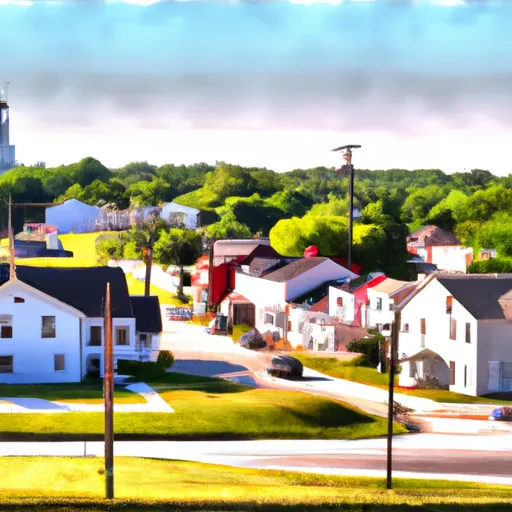-
 Snoflo Premium
Snoflo Premium
Get unlimited access to all our content
With no Ad interruptions! - Start Your Free Trial Login with existing account
Showell
Eden Index
Climate
9.7
•
Recreation
6.6
•
Community
1.2
•
Safeguard
6.5/10

Located on Maryland's Eastern Shore, Showell is a small unincorporated community nestled in Worcester County. Showell experiences a humid subtropical climate, characterized by hot and humid summers and mild winters. Summers bring average temperatures in the low to mid-80s Fahrenheit, while winters see temperatures ranging from the mid-30s to mid-50s Fahrenheit. Precipitation is relatively evenly distributed throughout the year, with slightly wetter summers.
Showell benefits from its proximity to the Pocomoke River, which offers various hydrology constituents. The river is known for its exceptional fishing opportunities, with common catches including bass, catfish, and crappie. Visitors can also enjoy kayaking, canoeing, and boating on the river, taking in the serene natural surroundings.
The area surrounding Showell is rich in outdoor recreation opportunities. Nearby, Pocomoke River State Park offers hiking, biking, and camping options, allowing visitors to explore the diverse ecosystems and observe wildlife such as deer and bald eagles. The park also features swimming and picnicking areas, ensuring ample opportunities for relaxation and enjoyment. With its pleasant climate and abundant outdoor activities, Showell is a desirable destination for nature enthusiasts and those seeking a tranquil escape.
What is the Eden Index?
The Snoflo Eden Index serves as a comprehensive rating system for regions, evaluating their desirability through a holistic assessment of climate health, outdoor recreation opportunities, and natural disaster risk, acknowledging the profound impact of these factors on livability and well-being.
Climate Health Indicator (CHI): 9.7
Showell receives approximately
1157mm of rain per year,
with humidity levels near 79%
and air temperatures averaging around
14°C.
Showell has a plant hardyness factor of
7, meaning
plants and agriculture in this region tend to thrive during the non-winter months.
By considering the ideal temperature range, reliable water supplies, clean air, and stable seasonal rain or snowpacks, the Climate Health Indicator (CHI) underscores the significance of a healthy climate as the foundation for quality living.
A healthy climate is paramount for ensuring a high quality of life and livability in a region, fostering both physical well-being and environmental harmony. This can be characterized by ideal temperatures, reliable access to water supplies, clean air, and consistent seasonal rain or snowpacks.
Weather Forecast
Streamflow Conditions
Upper Chesapeake
Area Rivers
Upper Chesapeake
Snowpack Depths
Upper Chesapeake
Reservoir Storage Capacity
Upper Chesapeake
Groundwater Levels
Recreational Opportunity Index (ROI): 6.6
The Recreational Opportunity Index (ROI) recognizes the value of outdoor recreational options, such as parks, hiking trails, camping sites, and fishing spots, while acknowledging that climate plays a pivotal role in ensuring the comfort and consistency of these experiences.
Access to outdoor recreational opportunities, encompassing activities such as parks, hiking, camping, and fishing, is crucial for overall well-being, and the climate plays a pivotal role in enabling and enhancing these experiences, ensuring that individuals can engage in nature-based activities comfortably and consistently.
Camping Areas
| Campground | Campsites | Reservations | Toilets | Showers | Elevation |
|---|---|---|---|---|---|
| Cape Henlopen State Park | 155 | 3 ft | |||
| Oceanside - Assateague National Seashore | 100 | 3 ft | |||
| Assateague State Park | 350 | 1 ft | |||
| Bayside - Assateague National Seashore | 50 | 4 ft | |||
| Delaware Seashore State Park | 330 | 3 ft |
Nearby Ski Areas
Catastrophe Safeguard Index (CSI):
The Catastrophe Safeguard Index (CSI) recognizes that natural disaster risk, encompassing floods, fires, hurricanes, and tornadoes, can drastically affect safety and the overall appeal of an area.
The level of natural disaster risk in a region significantly affects safety and the overall livability, with climate change amplifying these risks by potentially increasing the frequency and intensity of events like floods, fires, hurricanes, and tornadoes, thereby posing substantial challenges to community resilience and well-being.
Community Resilience Indicator (CRI): 1.2
The Community Resilience Indicator (CRI) recognizes that education, healthcare, and socioeconomics are crucial to the well-being of a region. The CRI acknowledges the profound impact of these elements on residents' overall quality of life. By evaluating educational resources, healthcare accessibility, and economic inclusivity, the index captures the essential aspects that contribute to a thriving community, fostering resident satisfaction, equity, and social cohesion.

